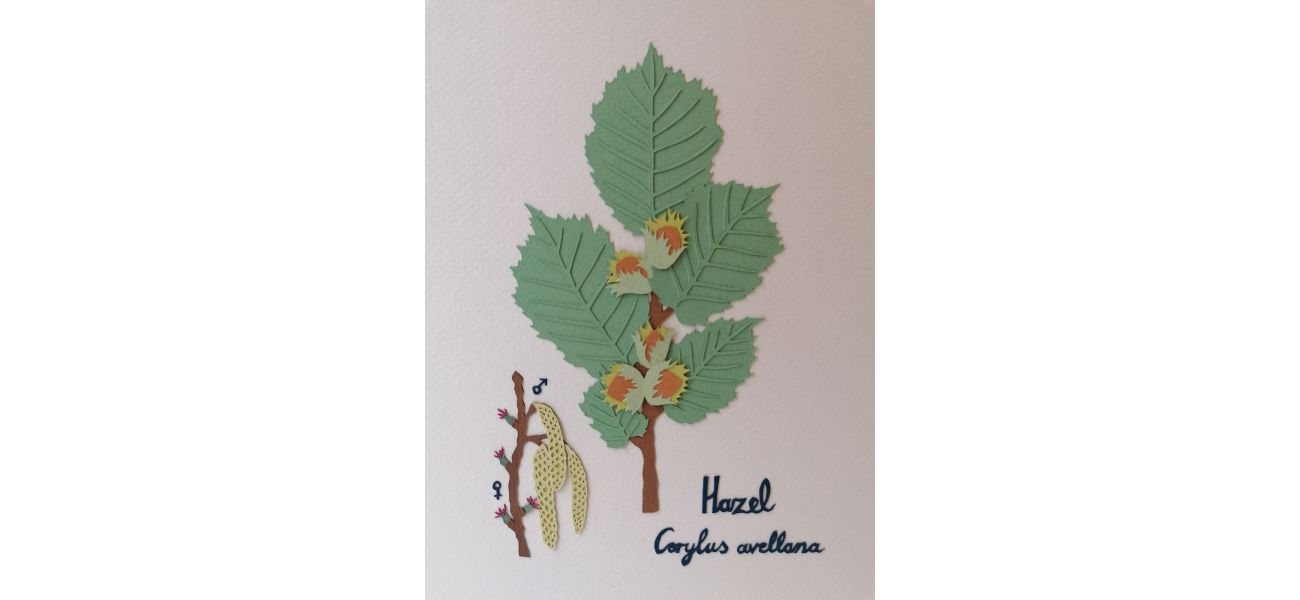Hazelnut tree, nicknamed the tree of knowledge, was among the earliest to inhabit this area after the ice age.
Gardening columnist Hamish Martin explores the history of hazel trees and their significance in ancient cultures. He suggests harvesting the leaves in spring for medicine and the nuts in autumn for food, making it a versatile choice for January.
November 29th 2024.

This month, our beloved gardening columnist Hamish Martin takes a deep dive into the rich history of the hazel tree. It's fascinating to see how this tree has become ingrained in our ancient customs and beliefs.
Now, one might wonder why we are focusing on the hazel tree for the month of January, when its leaves can be harvested for medicinal purposes in the spring and its nuts can be enjoyed as a tasty treat in the autumn. But I must confess, there is a personal reason behind my choice. You see, one of my favorite pastimes is venturing out to find the perfect hazel wood or tree during the winter months.
There's something enchanting about the smooth, silvery bark of a hazel tree in the wintertime. It almost seems to call out to me, inviting me to take a closer look at its tall, straight stems. My goal? To find the most ideal stick with just the right thickness, length, and fork to create a beautiful thumb stick - one that I often gift to others.
In fact, my own walking stick is made from a hazel tree that was harvested in January at a breathtaking hazel wood. After years of use, it has become incredibly smooth and has become an essential companion for my walks. Those who have joined me on my herbal walks can attest to this.
It's quite remarkable to think that the hazel tree, along with the silver birch, were the first trees to take root in this land after the ice age. Back then, the hazel tree was one of the most abundant species. It's no surprise that it has become deeply embedded in our history, beliefs, and customs.
The hazel tree has earned the title of the tree of knowledge, as it was believed to stand at the intersection between the physical and spiritual worlds. The Celts even associated hazelnuts with wisdom and poetic inspiration, as the Gaelic word for these nuts, "cno," is similar to the word for wisdom, "cnocach."
In the early days of spring, the hazel tree bursts to life with its long, dangling catkins - the male flowers that carry pollen on the wind. If you look closely, you may spot the tiny red female flowers that eventually develop into the nuts we love. And if you come across twisted stems, it's likely due to honeysuckle vine wrapping itself around the tree.
The hazel tree's straight and flexible rods have long been prized for their versatility. They were used to make creels for fishing and farming, thatching spars, net stakes, water-divining sticks, hurdles, furniture, barrel hoops, and even shepherd's crooks, walking sticks, and tool handles. The list goes on and on.
But let's not forget about the hazelnut itself. This nutritional powerhouse has been a staple food for humans since ancient times, with evidence of its consumption in Scotland dating back to the Mesolithic era. And it's not just us who appreciate these tasty treats - squirrels, mice, and birds also rely on hazelnuts as a food source.
It's no wonder this incredible tree is intertwined with our very being. It's time for us to rekindle that connection and honor the hazel tree. And what better way to do so than with a walking stick, holding onto our past as we journey into the future.
For more captivating garden stories, be sure to check out our other articles. And don't forget to subscribe to the latest issue of Scottish Field.
Now, one might wonder why we are focusing on the hazel tree for the month of January, when its leaves can be harvested for medicinal purposes in the spring and its nuts can be enjoyed as a tasty treat in the autumn. But I must confess, there is a personal reason behind my choice. You see, one of my favorite pastimes is venturing out to find the perfect hazel wood or tree during the winter months.
There's something enchanting about the smooth, silvery bark of a hazel tree in the wintertime. It almost seems to call out to me, inviting me to take a closer look at its tall, straight stems. My goal? To find the most ideal stick with just the right thickness, length, and fork to create a beautiful thumb stick - one that I often gift to others.
In fact, my own walking stick is made from a hazel tree that was harvested in January at a breathtaking hazel wood. After years of use, it has become incredibly smooth and has become an essential companion for my walks. Those who have joined me on my herbal walks can attest to this.
It's quite remarkable to think that the hazel tree, along with the silver birch, were the first trees to take root in this land after the ice age. Back then, the hazel tree was one of the most abundant species. It's no surprise that it has become deeply embedded in our history, beliefs, and customs.
The hazel tree has earned the title of the tree of knowledge, as it was believed to stand at the intersection between the physical and spiritual worlds. The Celts even associated hazelnuts with wisdom and poetic inspiration, as the Gaelic word for these nuts, "cno," is similar to the word for wisdom, "cnocach."
In the early days of spring, the hazel tree bursts to life with its long, dangling catkins - the male flowers that carry pollen on the wind. If you look closely, you may spot the tiny red female flowers that eventually develop into the nuts we love. And if you come across twisted stems, it's likely due to honeysuckle vine wrapping itself around the tree.
The hazel tree's straight and flexible rods have long been prized for their versatility. They were used to make creels for fishing and farming, thatching spars, net stakes, water-divining sticks, hurdles, furniture, barrel hoops, and even shepherd's crooks, walking sticks, and tool handles. The list goes on and on.
But let's not forget about the hazelnut itself. This nutritional powerhouse has been a staple food for humans since ancient times, with evidence of its consumption in Scotland dating back to the Mesolithic era. And it's not just us who appreciate these tasty treats - squirrels, mice, and birds also rely on hazelnuts as a food source.
It's no wonder this incredible tree is intertwined with our very being. It's time for us to rekindle that connection and honor the hazel tree. And what better way to do so than with a walking stick, holding onto our past as we journey into the future.
For more captivating garden stories, be sure to check out our other articles. And don't forget to subscribe to the latest issue of Scottish Field.
[This article has been trending online recently and has been generated with AI. Your feed is customized.]
[Generative AI is experimental.]
0
0
Submit Comment




